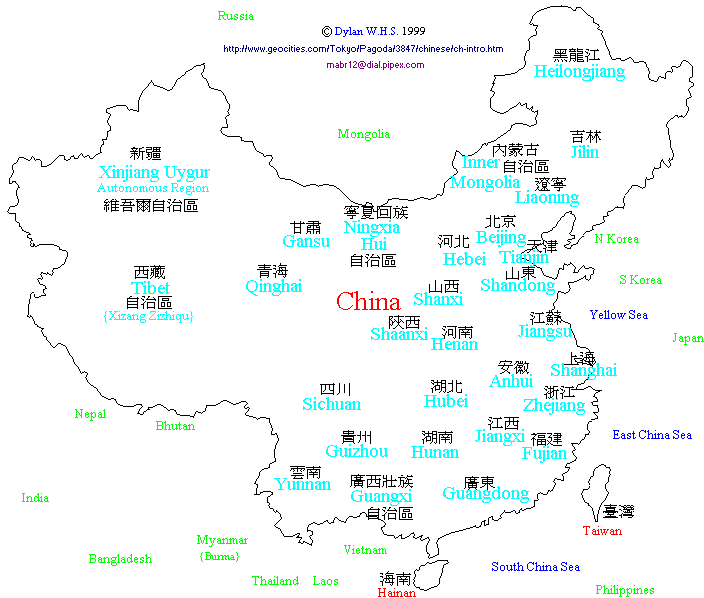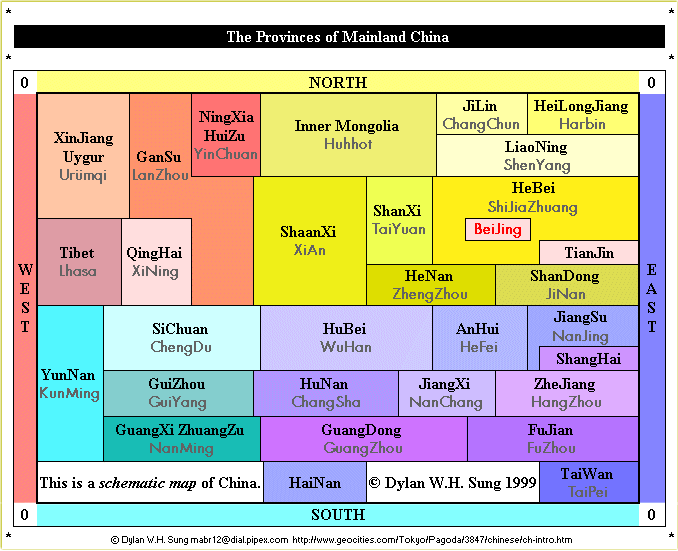

| NORTH | |||
|---|---|---|---|
| W E S T |
North West
Autonomous Region Autonomous Region |
North East
Autonomous Region | E A S T |
|
South West
( Kwangsi-ChuangTzu) Autonomous Region |
South East
| ||
| SOUTH | |||

By actual comparison with a map of the provinces, we must then move the borders around in this simplified map so that true neighbour to neighbour correspondence between provinces is achieved. The results are below, this time with the inclusion of Beijing, Tianjin and Shanghai. I have also included the names of the principle cities in each province.
